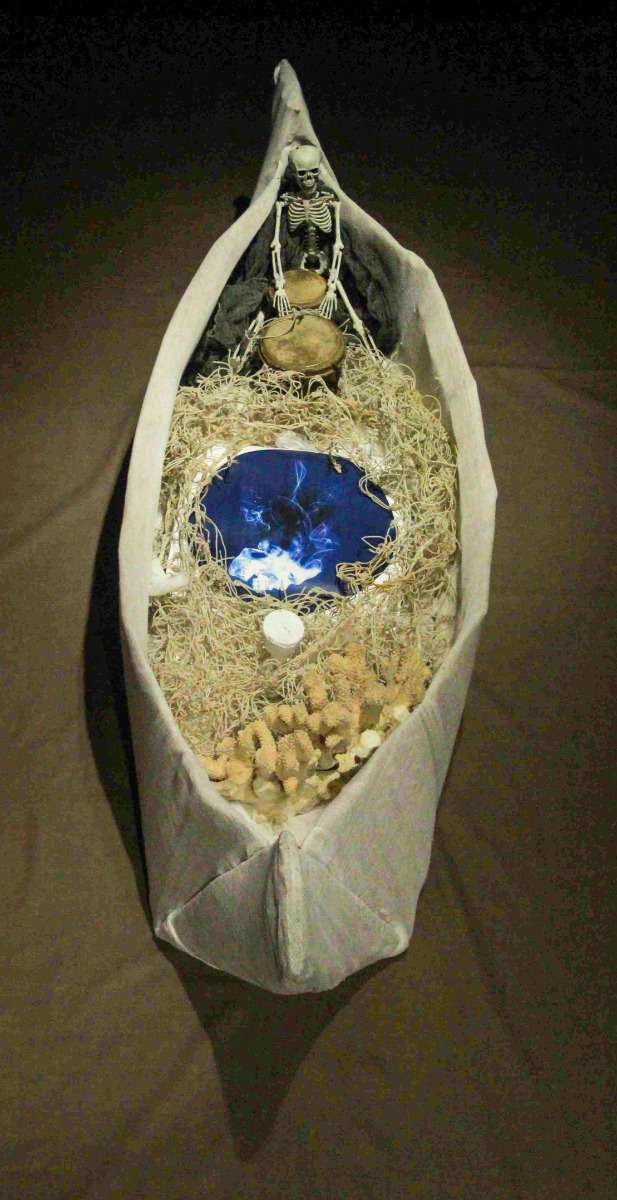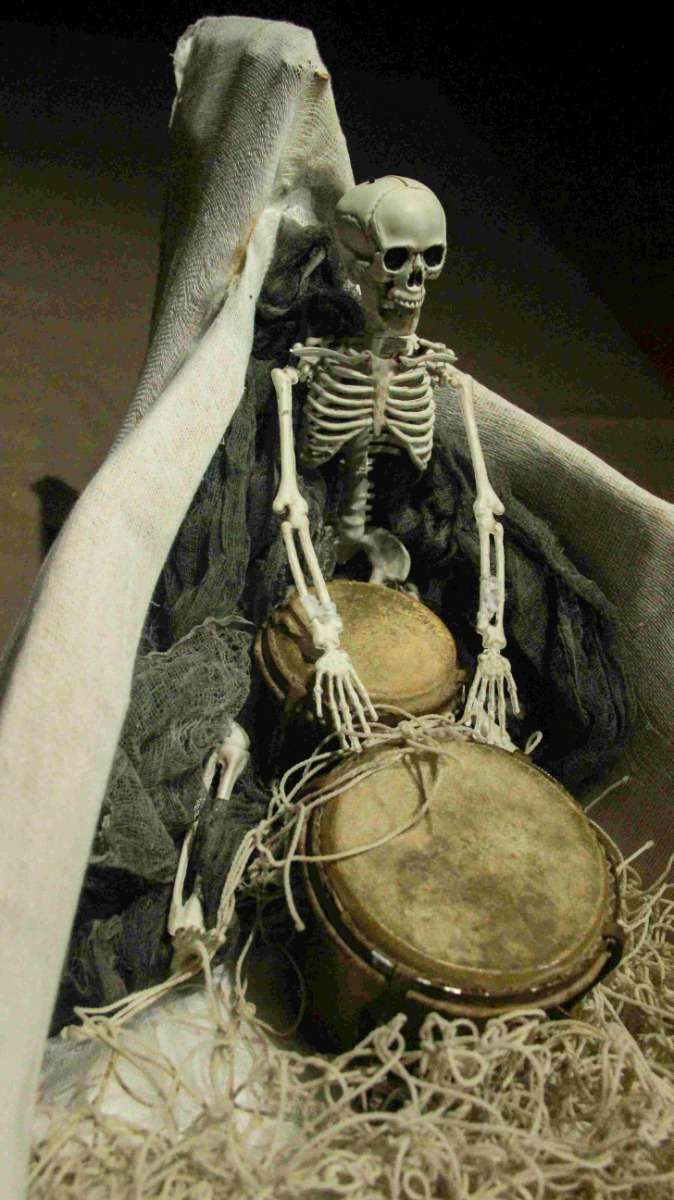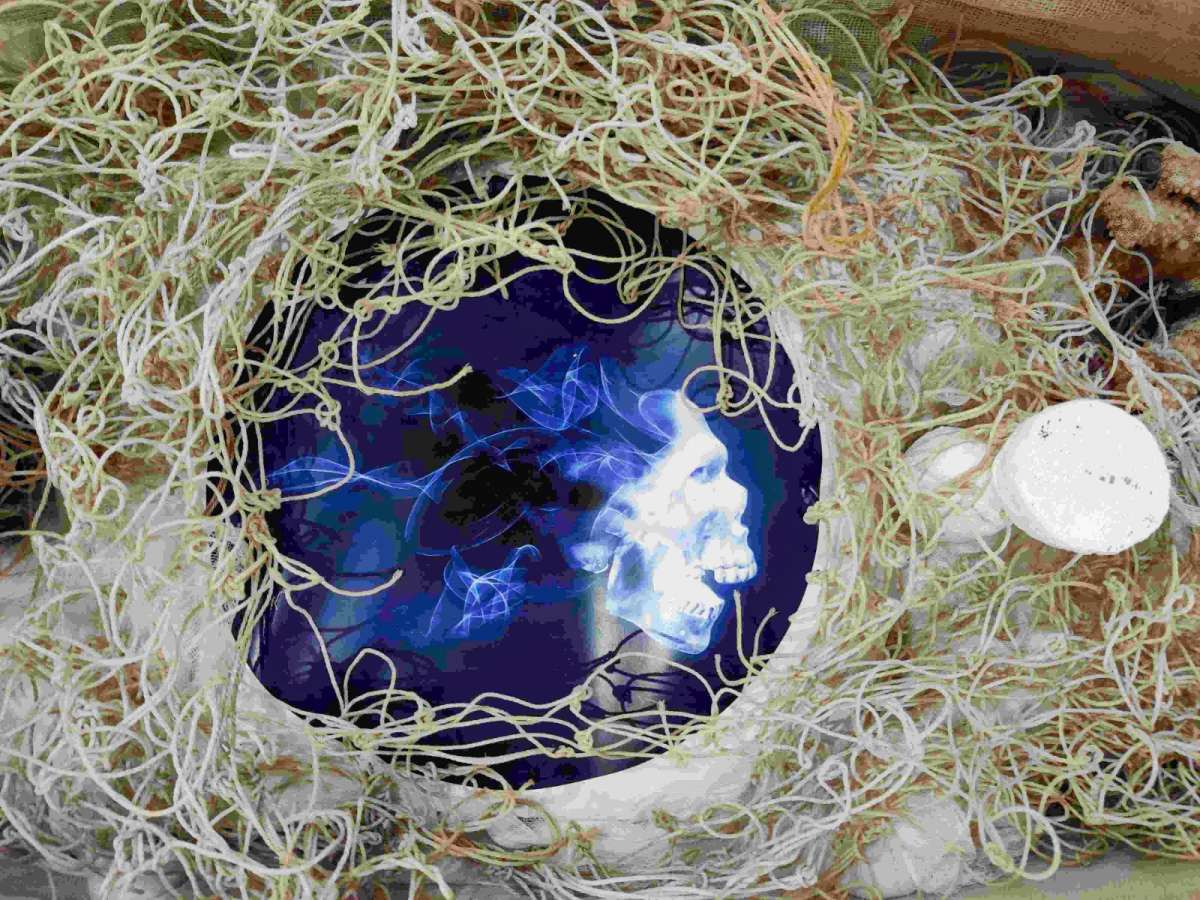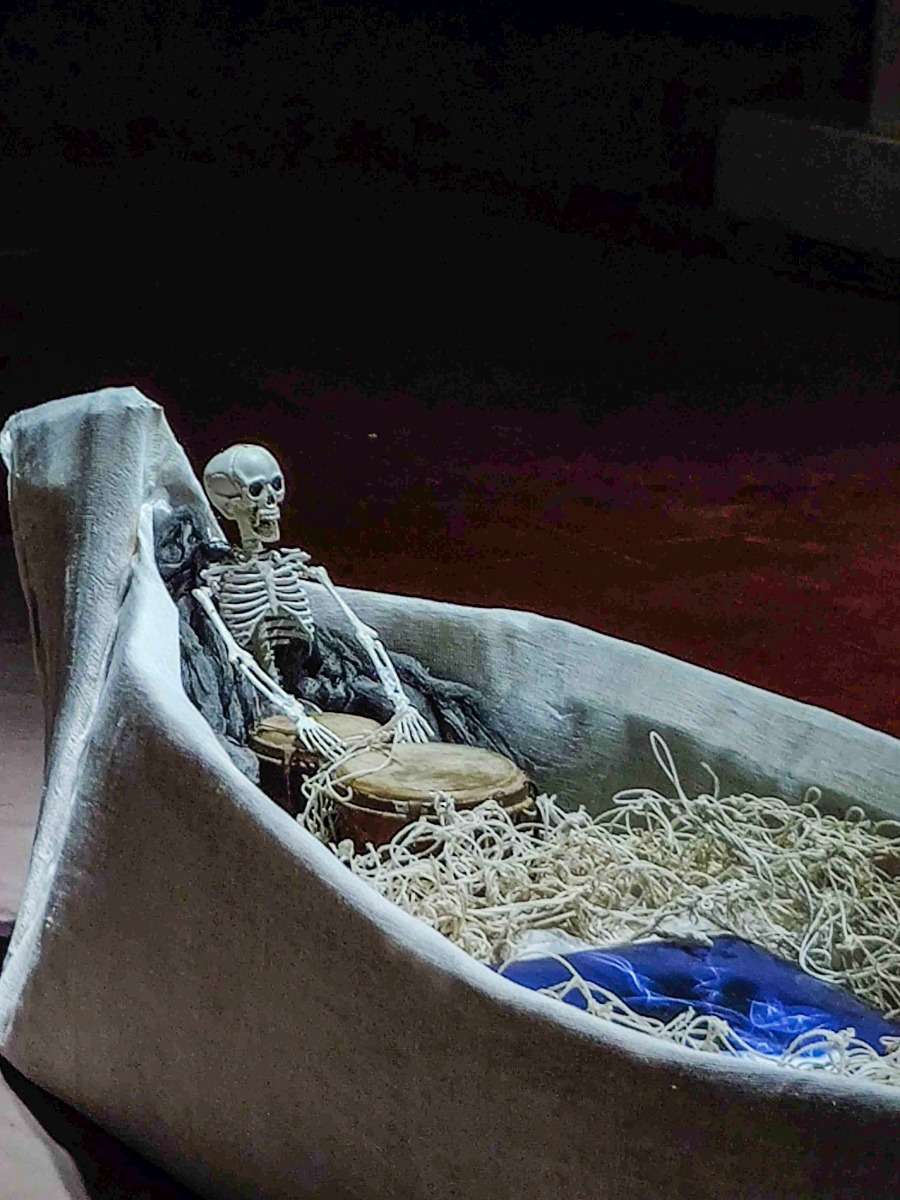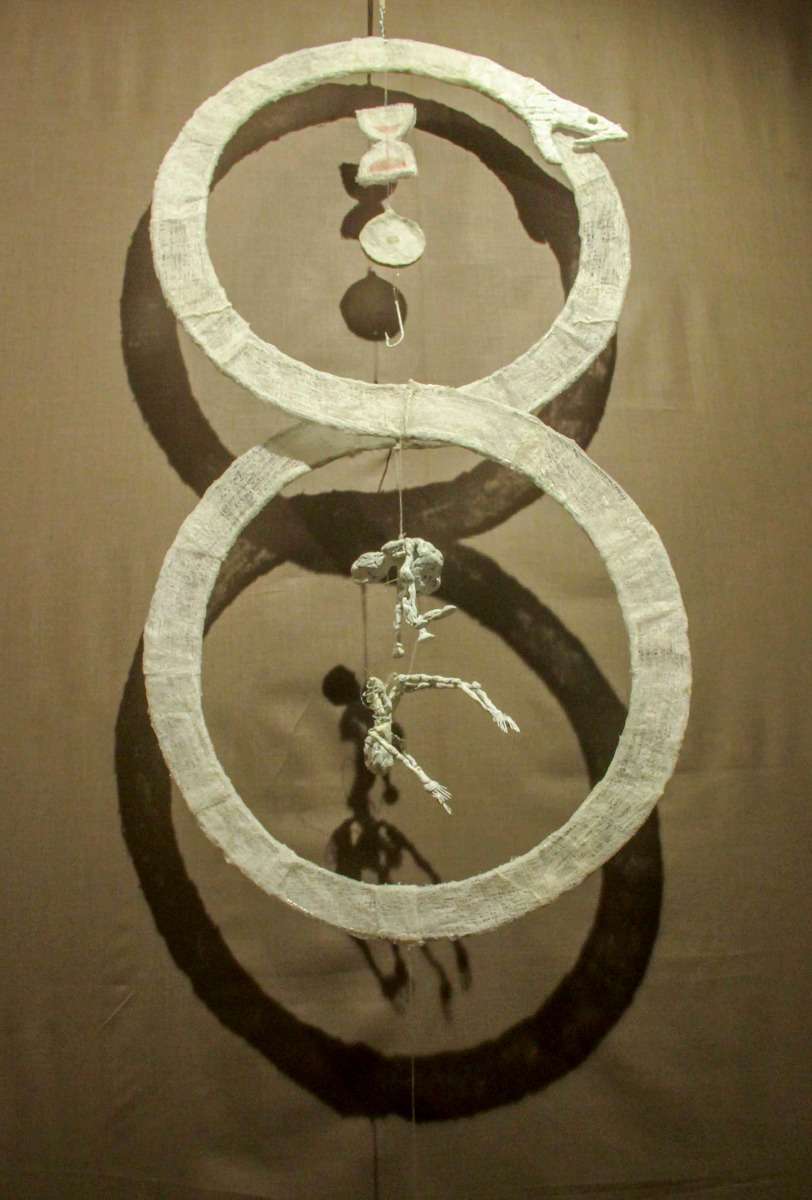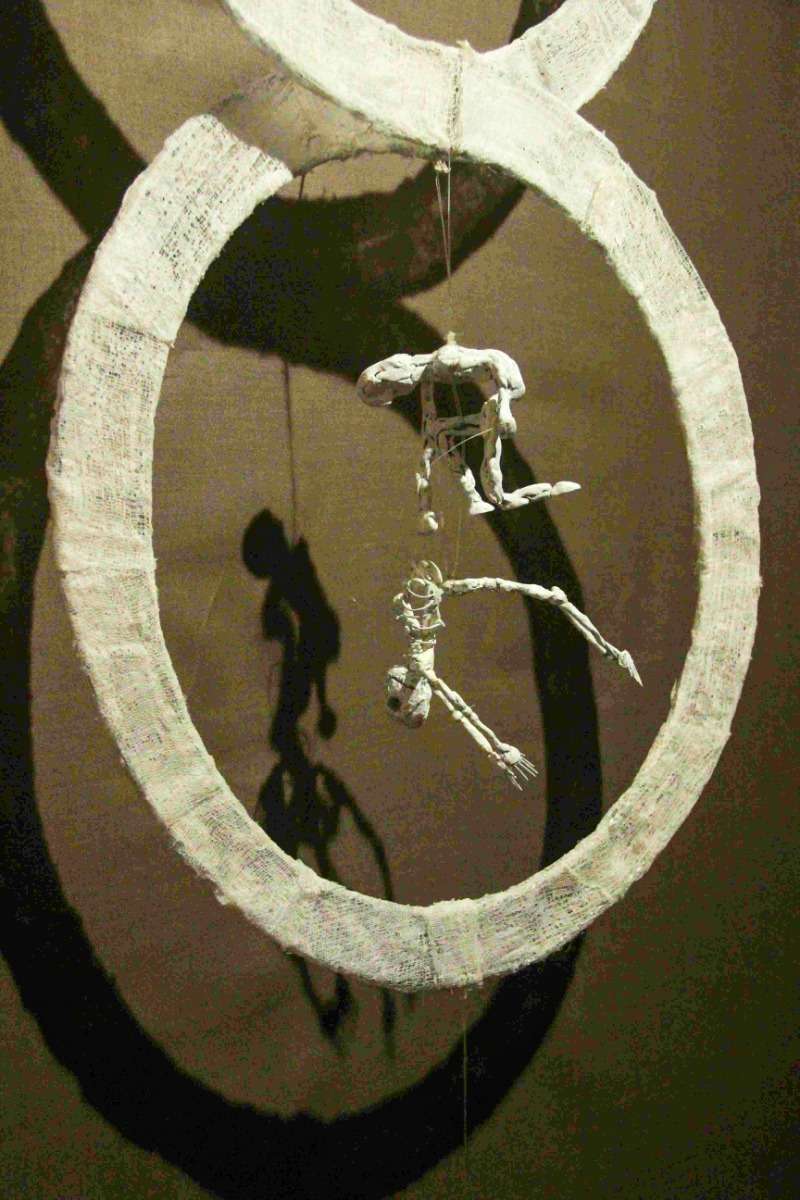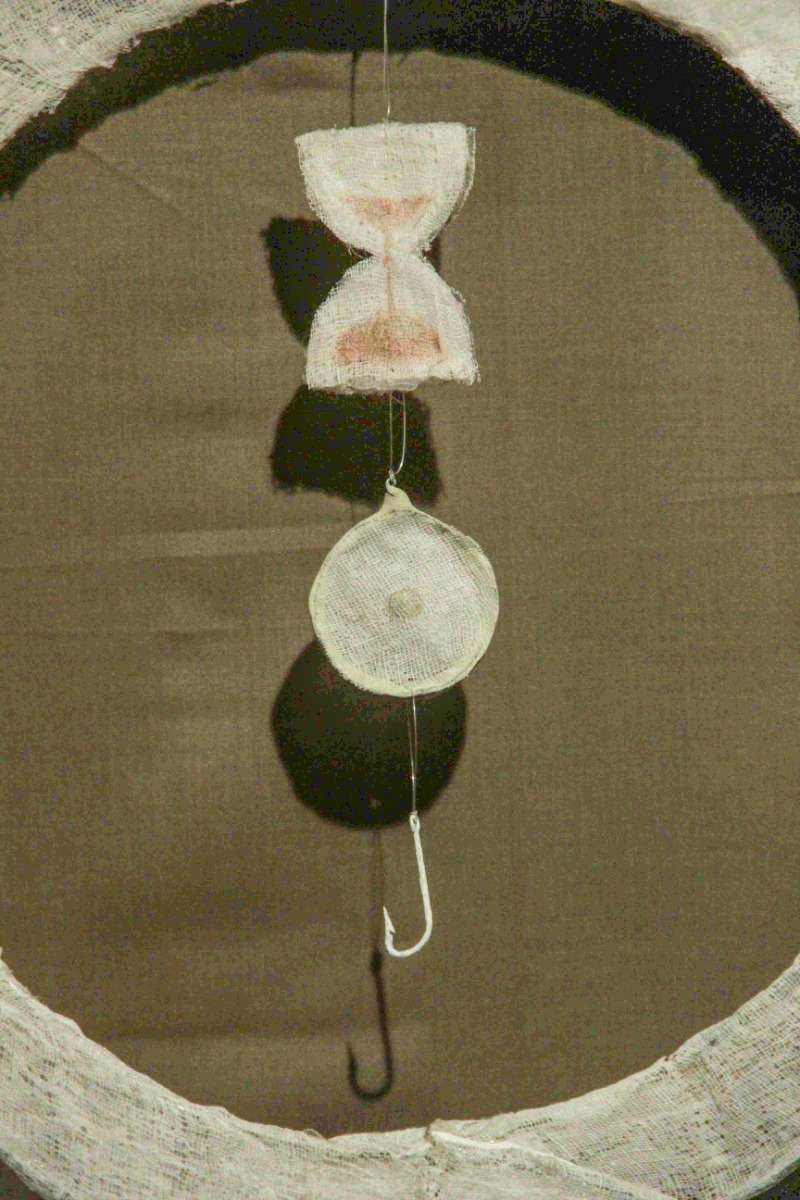The work draws from an Inuit story, re-told in Estés’ words, of a fisherman who drags up a sunken Skeleton Woman, overcomes his fear of her and patiently untangles her. She in turn, through primeval magic re-forms herself into a much longed for companion. To Miriam, "The boat transforms into a vehicle for the Woman’s soul with the Skeleton Woman, at once a symbol of death and resurrection, occupying pride of place in this interpretation of a ‘shadow box’. When we go beyond the fear of death and change and embrace all that needs to die is us to make way for new ways of being, we untangle the Skeleton Woman and make her our ally. In doing so she beats at our heart drum, heralding the life that we need to fulfill the essence of our being."
Dadme La Muerte Que Me Falta (Give Me The Death I Need), 2020.
Ars Moriendi (The art of dying), 2020.
While both her works draw on the Inuit story of a fisherman and the Skeleton woman from Estés’ book, this one can be seen as Miriam’s poetic interpretation of the key elements in the story. The story takes a poignant turn when the Fisherman goes beyond his fear to untangle the Skeleton Woman, thus embracing Lady Death. The now re-incarnated Woman draws her flesh and beating heart from his body, thus closing the loop on the Life-Death-Life cycle built into nature. The ancient symbol of the Ouroboros (the snake eating its tail, a symbol of infinity) holds within its endlessness, time (the hourglass), space (the compass) and the skeletal remains of the fisherman and his Woman, which are forever suspended together in an endless un baile con La Muerte, the eternal Dance of Life & Death. As Miriam notes, “The Residency with its focus on how “everyday objects scream aloud” and the possibility of making it a part of my ongoing practice of exploring gauze as a medium and a muse, led to this experimentation with a new vocabulary in terms of the gauze hourglass, the drum and the Ouroboros itself as a ‘container’ or shadowbox. Together they are presented as a haiga on the Life-Death-Life Cycle underpinning the tale of the Skeleton Woman.”

Miriam has founded an art practice that looks to her immediate surroundings and materials for inspiration. From tea bag art and sun printing, to her inherently tactile gauze interventions, her works are quiet representations of her inner thoughts.
Straddling different mediums and thoughts, unfettered by a singular need to conform, for the Residency she looks to a literary source for inspiration. For her two works, Miriam sought out the story of the Skeleton Woman from Women Who Run With The Wolves, a feminist classic by Clarissa Pinkola Estés. In re-telling international myths and fairy tales, the messages within them are dissected for the modern woman. The story of the Skeleton Woman examines our struggles to comprehend and deal with the Life-Death-Life cycle. It recognises death as the beginning of growth, altering our perspective of the end as something to fear.






